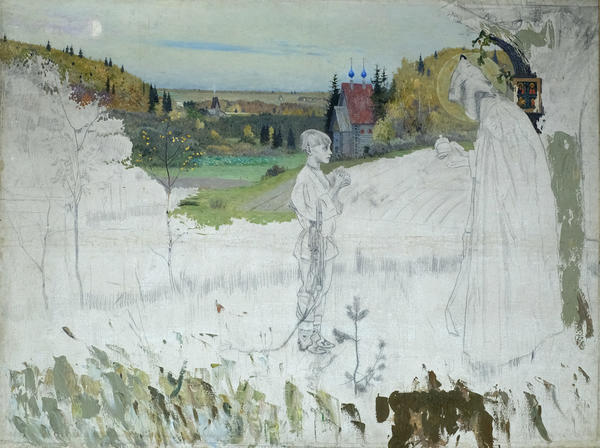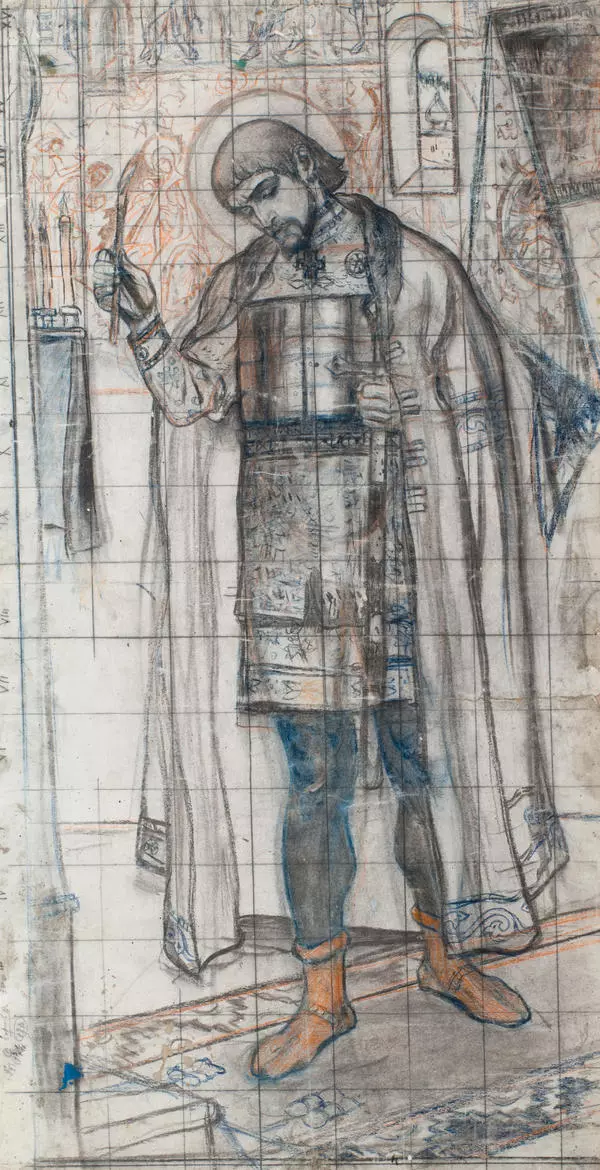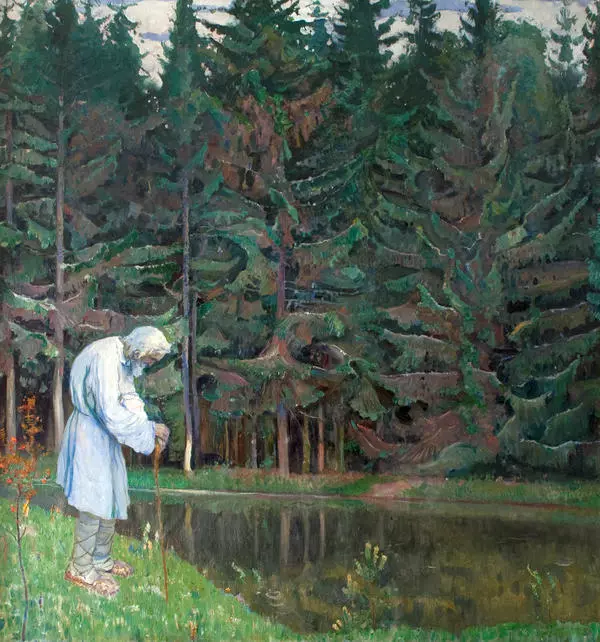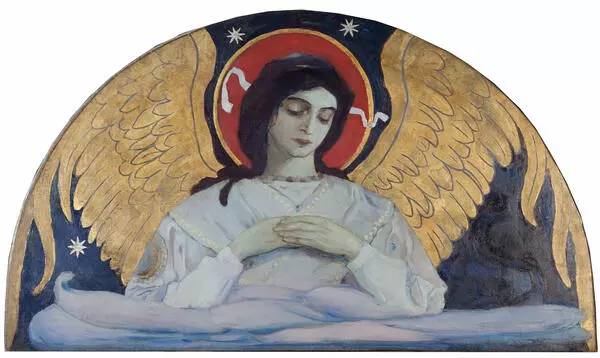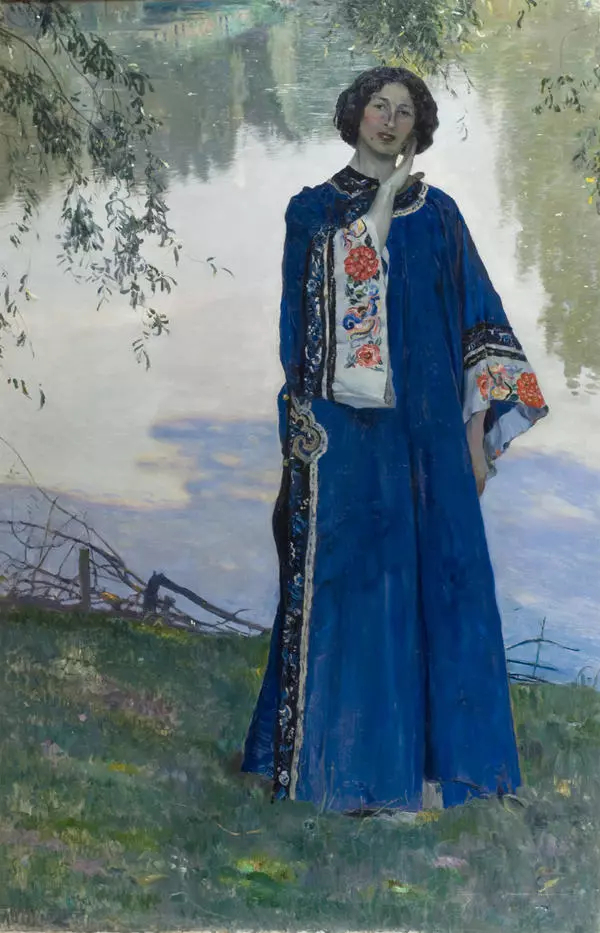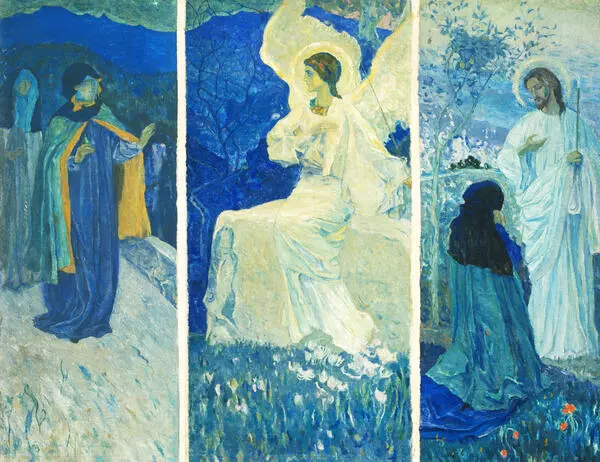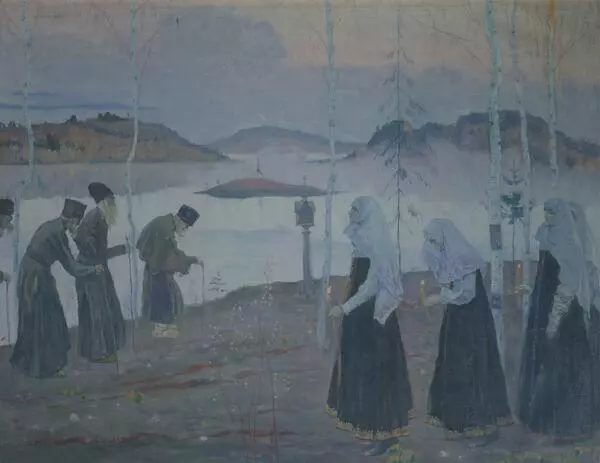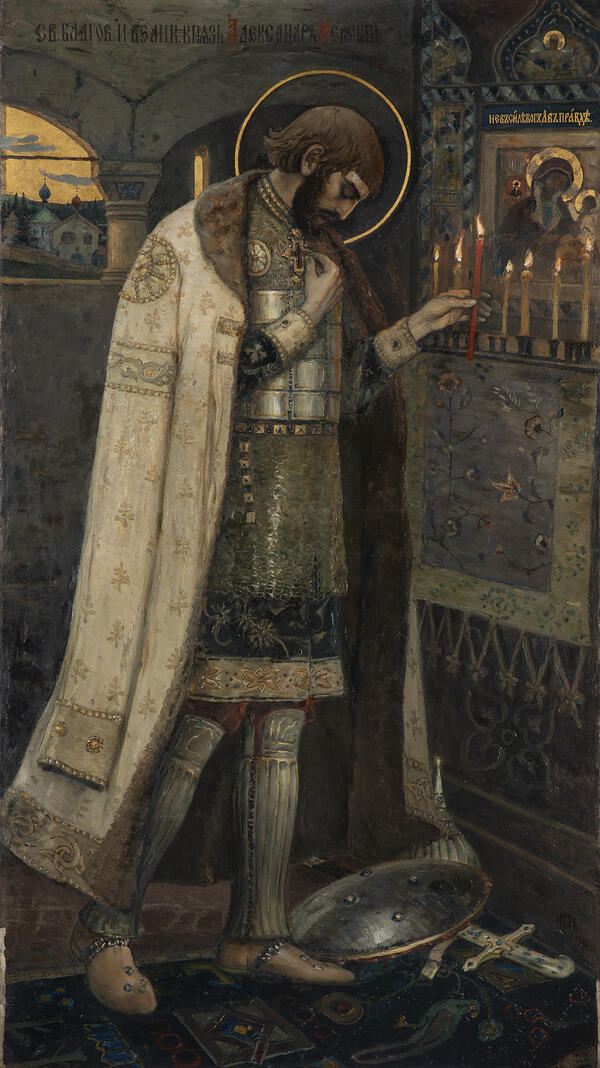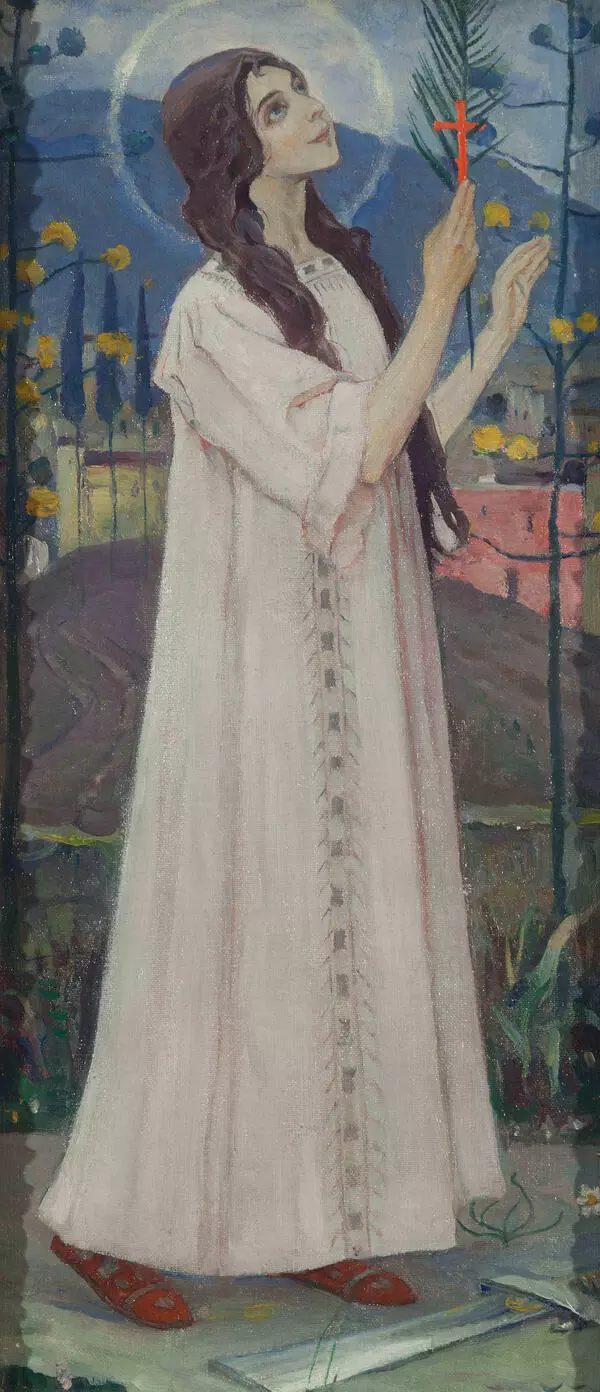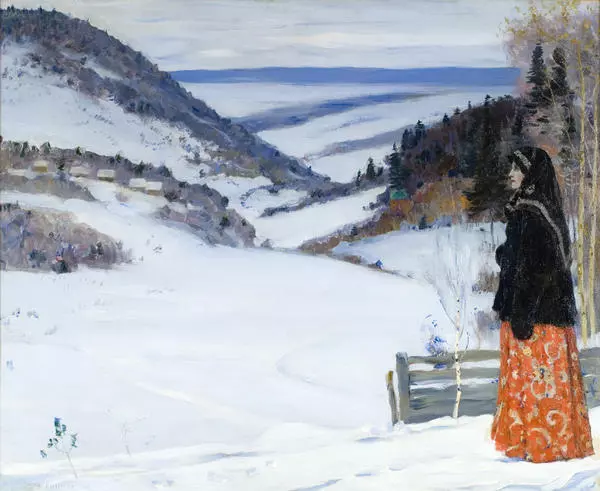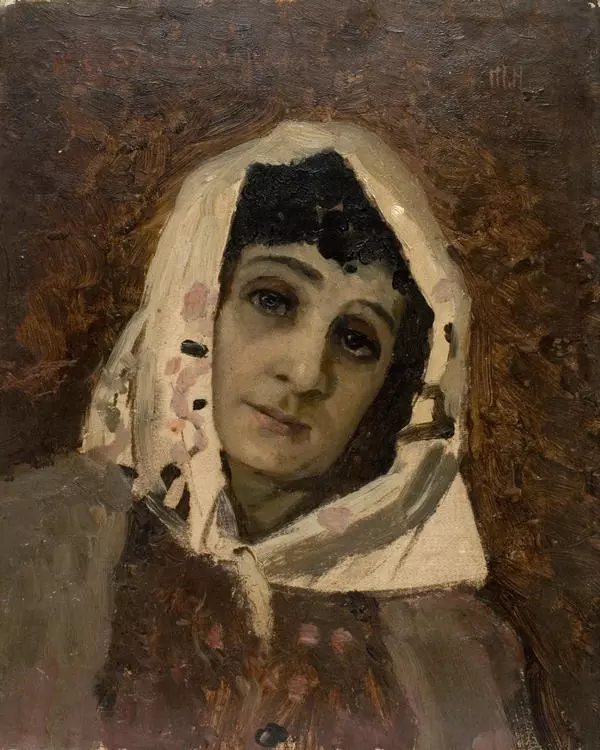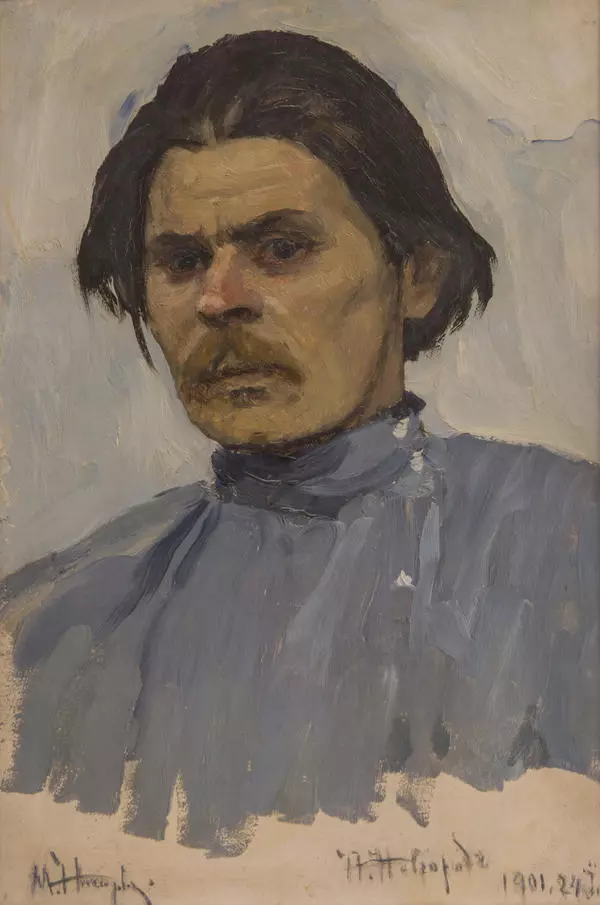Since his childhood, Mikhail Nesterov was enchanted by the image of Venerable St. Sergius of Radonezh — and outstanding religious figure who lived in the first half of the XV century. He became the spiritual leader of the struggle with Mongol-Tartars and reconciled warring Russian princes, which eventually led to the victory in the Battle of Kulikovo. Venerable Sergius promoted education among the Russian people and was canonized by the Russian Orthodox Church.
Nesterov turned to the image of the Saint due to the tragedy that happened in the very start of his creative career. The sudden death of his beloved wife cut the ground from under his feet: possessed by grief and searching to regain the meaning of life, he was looking for a new subject for his art. St. Sergius of Radonezh became the character who gave him inspiration again. The artist first turned to the image of the Saint in 1886 and later created a series of fifteen monumental paintings.
The paintings of the cycle devoted to St. Sergius of Radonezh represented his major departure from the social principles of the Itinerants that had a major influence on his future artistic path. Nesterov’s objective became the portrayal of spirituality of the Russian people, a man’s search for the ideals of morality and finding God.
The work on the painting The Vision to Youth Bartholomew started in 1889. The subject was the story from the life of St. Sergius of Radonezh (secular name — Bartholomew), written by his disciple Epiphanius. When the boy turned seven, parents sent him to school, but studies went poorly, he was having difficulty learning reading and writing. Everything changed after he met a venerable elder in a forest. In reply to Bartholomew’s sharing his desire to learn reading the elder gave him a prosphora and the young miraculously acquired the ability for studying.
But Nesterov was interested not so much in the subject, as in the perception of the situation by the young peasant. The posture of the youth, bent in prayer expecting a miracle, resonates with the realistic Russian landscape. The painting is filled with the state of harmony between man and nature that later was given the name of “Nesterov”s lyricism”. He was the first among Russian artists to unite in his creations moral ideals, love for his motherland and lofty religious sentiments.
The museum collection contains the unfinished version of the painting, only the top part is painted. The artist continued his work in his parents’ house in Ufa and accidentally damaged the canvas, so he had to start the work anew. The second finished version was later shown at exhibitions and was bought by Pavel Mikhailovich Tretyakov for his gallery. The unfinished painting remained in Ufa and later became the property of Bashkortostan Museum.
Nesterov turned to the image of the Saint due to the tragedy that happened in the very start of his creative career. The sudden death of his beloved wife cut the ground from under his feet: possessed by grief and searching to regain the meaning of life, he was looking for a new subject for his art. St. Sergius of Radonezh became the character who gave him inspiration again. The artist first turned to the image of the Saint in 1886 and later created a series of fifteen monumental paintings.
The paintings of the cycle devoted to St. Sergius of Radonezh represented his major departure from the social principles of the Itinerants that had a major influence on his future artistic path. Nesterov’s objective became the portrayal of spirituality of the Russian people, a man’s search for the ideals of morality and finding God.
The work on the painting The Vision to Youth Bartholomew started in 1889. The subject was the story from the life of St. Sergius of Radonezh (secular name — Bartholomew), written by his disciple Epiphanius. When the boy turned seven, parents sent him to school, but studies went poorly, he was having difficulty learning reading and writing. Everything changed after he met a venerable elder in a forest. In reply to Bartholomew’s sharing his desire to learn reading the elder gave him a prosphora and the young miraculously acquired the ability for studying.
But Nesterov was interested not so much in the subject, as in the perception of the situation by the young peasant. The posture of the youth, bent in prayer expecting a miracle, resonates with the realistic Russian landscape. The painting is filled with the state of harmony between man and nature that later was given the name of “Nesterov”s lyricism”. He was the first among Russian artists to unite in his creations moral ideals, love for his motherland and lofty religious sentiments.
The museum collection contains the unfinished version of the painting, only the top part is painted. The artist continued his work in his parents’ house in Ufa and accidentally damaged the canvas, so he had to start the work anew. The second finished version was later shown at exhibitions and was bought by Pavel Mikhailovich Tretyakov for his gallery. The unfinished painting remained in Ufa and later became the property of Bashkortostan Museum.

